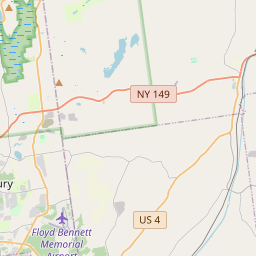Civil War Mound and Urn
Historical marker location:





April 12, 1861: The Civil War begins with the Confederate attack on Fort Sumter, located in South Carolina's Charleston Harbor.
April 15, 1861: President Abraham Lincoln issues a call for 75,000 volunteers to serve in the Union Army to suppress the rebellion.
May 24, 1861: The first major land battle, known as the First Battle of Bull Run (or First Battle of Manassas), takes place in Virginia. It ends in Confederate victory.
September 17, 1862: The Battle of Antietam in Maryland becomes the bloodiest single-day battle in American history, with heavy casualties on both sides. The Union forces, commanded by General George McClellan, manage to halt Confederate General Robert E. Lee's advance into Union territory.
January 1, 1863: President Lincoln issues the Emancipation Proclamation, declaring that all slaves in Confederate-held territories are to be set free. However, the proclamation does not immediately free all slaves in the United States.
July 1-3, 1863: The Battle of Gettysburg in Pennsylvania takes place, resulting in a significant Union victory and inflicting heavy casualties on Confederate forces. It marks a turning point in the war.
November 19, 1863: President Lincoln delivers the Gettysburg Address, emphasizing the principles of liberty, equality, and the preservation of the Union.
April 9, 1865: General Robert E. Lee surrenders to Union General Ulysses S. Grant at Appomattox Court House in Virginia, effectively ending the Civil War.
April 14, 1865: President Lincoln is assassinated by John Wilkes Booth while attending a play at Ford's Theatre in Washington, D.C.
May 10, 1865: Confederate President Jefferson Davis is captured, signaling the collapse of the Confederate government.
December 6, 1865: The Thirteenth Amendment to the United States Constitution is ratified, officially abolishing slavery throughout the country.
While this timeline provides an overview of key events, it is important to note that the Civil War spanned over four years, from 1861 to 1865, and encompassed numerous battles, campaigns, and political developments that shaped the course of American history.
New York State was the site of the deadliest terrorist attack in United States history prior to 9/11. In 1993, a bomb planted in the World Trade Center by Islamic extremists killed six people and injured more than a thousand others.
During the colonial period, settlers in Washington County developed a thriving agricultural community. Fertile soils supported the growth of wheat, corn, and other crops, leading to the establishment of numerous farms. The county's location along the historic Champlain Canal also facilitated trade and the transportation of goods between the northern and southern regions of New York.
The American Revolution had a profound impact on Washington County. The region's strategic location near the Hudson River made it a prime target for both British and American forces. The Revolutionary War Battle of Saratoga, one of the turning points in the war, took place in northern parts of the county. The victory at Saratoga bolstered American morale and convinced France to form an alliance with the United States.
In the 19th century, Washington County experienced significant industrial development. The construction of the Erie Canal provided new opportunities for trade and stimulated economic growth. The county became a major center for manufacturing, with mills, factories, and foundries springing up in towns like Fort Edward and Whitehall. However, with the decline of the canal system in the late 1800s, the county's economy shifted towards agriculture and tourism.
Today, Washington County is known for its charming rural landscape, historic villages, and agricultural traditions. It continues to celebrate its heritage through cultural events, including fairs and festivals that showcase the county's rich history. From its early days as a frontier settlement to its role in shaping American history, Washington County remains a testament to the resilience and ingenuity of its inhabitants.
Washington County Timeline
This timeline provides a condensed summary of the historical journey of Washington County, New York.
- 1772 - Washington County is established and named after President George Washington.
- 1775 - The Battle of Hubbardton takes place during the American Revolutionary War.
- 1783 - The Treaty of Paris is signed, officially ending the Revolutionary War.
- 1791 - The town of Granville is founded.
- 1859 - The town of Greenwich is incorporated.
- 1875 - The Washington County Fair is established.
- 1900 - The county's population reaches its peak at over 60,000 residents.
- 1961 - The Batten Kill Railroad is officially abandoned.
- 1984 - The Battle of Saratoga is recognized as a National Historic Landmark.
- 2006 - The Washington County Historical Society is founded.